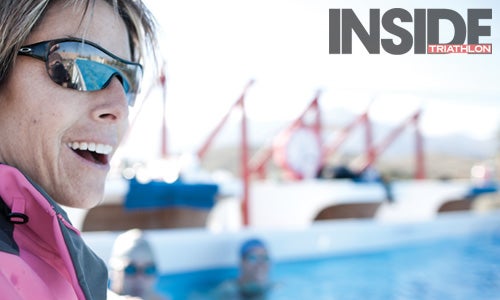Going Long(er): Tips From Coach Siri Lindley

Photo: John Segesta
Step up from the Olympic to half-iron distance with these pro tips from coach Siri Lindley.
This article was originally published in the Sept./Oct. 2012 issue of Inside Triathlon magazine.
Want to cruise through a 70.3 like you do an Olympic-distance race? Here are three expert tips from Siri Lindley, the Los Angeles-based coach who helped 70.3 world champ Mirinda Carfrae and 70.3 silver medalist Mary Beth Ellis successfully make the jump.
1. Follow the 10 percent rule.
“Finishing healthy is obviously the main goal,” Lindley says. To do that, you must build up training volume gradually. Lindley likes the 10 percent rule. If you ride three hours on one weekend, for example, your next long ride shouldn’t be more than 10 percent longer, or about three hours and 20 minutes. “Give yourself enough time to work up to the distance without increasing your training volume too aggressively,” Lindley says.
2. Remember that strong is fast.
Strength is a key component to success at the half-iron distance. “Strength comes into play in so many different ways, whether it’s holding your form together, or keeping a certain pace for the entire race and being strong in the last few miles,” Lindley says. The longer distance you’re racing, the more strength work you should do. Lindley’s athletes typically do two sessions of sport-specific strength training per week, such as pedaling with low cadence on the bike, or wearing paddles in the pool. They also complete at least one other strength session of their choice, whether that’s a TRX workout, kettle bell exercises, or a trip to the weight room.
3. Check yourself before you wreck yourself.
“Learning the pacing of it is the toughest thing,” Lindley says. “You definitely want to know you can cover the distance, so make sure in training you’ve covered that swim distance, bike distance and run distance.” And when it comes down to envisioning a realistic time goal, shoot for a range of time rather than an exact time. Lindley looks at her athletes’ tempo runs, track sessions and swim and bike time trials to get a sense of how they’ll perform on race day.
Once you have your training dialed, “don’t be afraid to put it all out there and have faith that your work will pay off and you’ll get through the run,” Lindley says. “If you’ve prepared properly for your race, you’ll be able to hold on and give your best performance.”